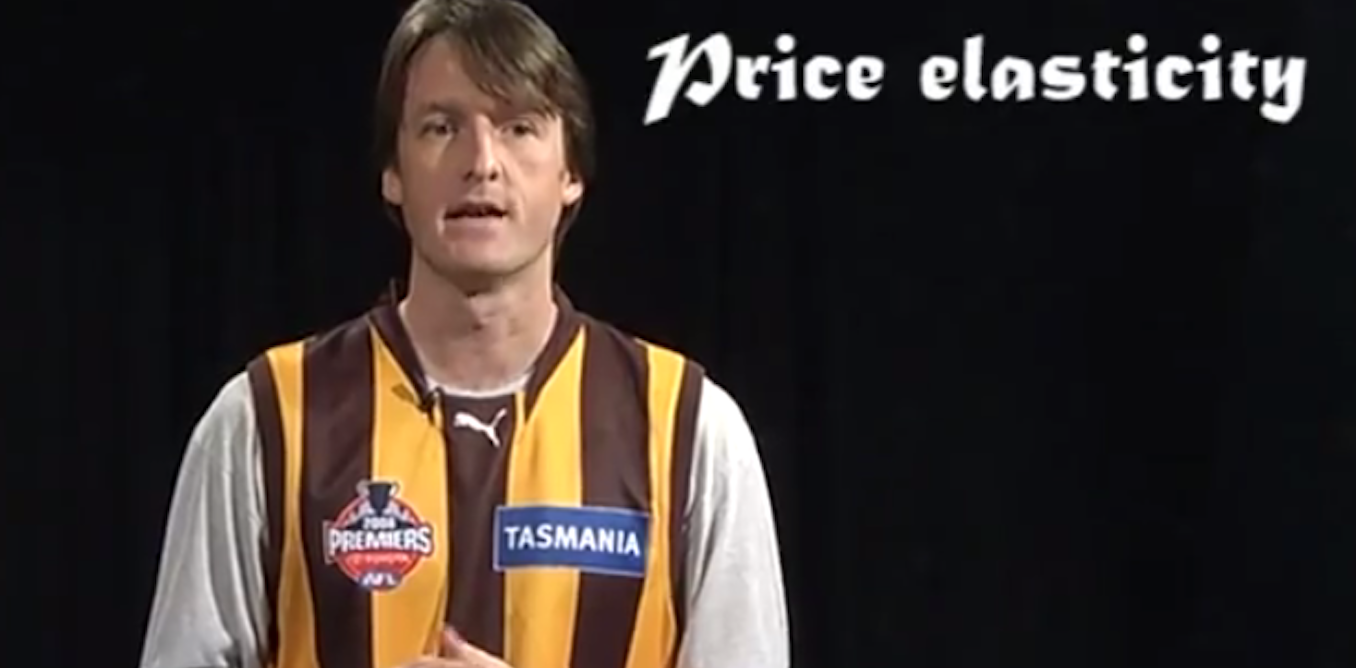
The economics behind inelastic ticket pricing (video)
- Select a language for the TTS:
- UK English Female
- UK English Male
- US English Female
- US English Male
- Australian Female
- Australian Male
- Language selected: (auto detect) - EN
Play all audios:

_WELCOME TO SOME SPORTS ECONOMICS, A SIX-PART VIDEO SERIES EXPLAINING ECONOMIC CONCEPTS THROUGH SPORT, BY LA TROBE UNIVERSITY SENIOR LECTURER, LIAM LENTEN._ _EVER WONDERED WHY THE AFL
DOESN’T CHARGE MORE TO SEE GAMES LIVE - BUT STADIUM FOOD COSTS A FORTUNE? IT’S CALLED INELASTIC PRICING AND IN THE THIRD PART OF THIS SERIES, LIAM LOOKS AT THIS STRATEGY AS WELL AS THE
CONCEPT OF COMPLEMENTARITIES.._ ------------------------- _YOU CAN WATCH LIAM EXPLAIN THE VIDEO._ _OR READ THROUGH THE TRANSCRIPT BELOW._ ------------------------- Sports fans out there
might be aware of the casual observation that ticket prices tend to be lower than might otherwise be expected (the AFL is a really good example). This brings to light the strategy of pricing
in the inelastic region of the demand curve. Price elasticity, our tool here, is defined as: The percentage change in quantity demanded owing to a change in price, divided by the percentage
change in price that gave rise to that change in demand. Basic microeconomic principles tell us that a monopolist maximises profits when prices are where marginal revenue equals marginal
cost (See this explained in the previous video). A lot of research suggests that teams and leagues set prices in the inelastic part of the demand curve, and that these leagues would be
better off by setting match ticket prices above current levels (that is. that ticket prices are lower than the profit-maximising level). This is a puzzle (I mean, don’t these guys care about
optimisation?). The question arises: why is this so? Well, if marginal cost was zero (as assumed in the previous video), then the profit-maximising solution is at unit elasticity (as
depicted in the top panel). If we relax this assumption (arguably more realistic – after all, we need more venue staff as the crowd grows in number) to allow marginal cost to be non-zero
(albeit small), then the profit-maximising solution is at a slightly lower quantity, and subsequently in the elastic part of the curve. The new equilibrium price is actually higher, not
lower! This reinforces the puzzle, so the explanation has to be something else. So, what is it then? One possibility (a likely candidate) is revenues from sources other than the gate (as
shown in the bottom panel) – car parking, food, merchandise etc. We’ve left it late this time, but the underlying concept here is that of complementarities – there are analogies in many
other industries, like how concerts in the music industry have become relatively more expensive over time because of the diminished ability of artists to extract complementary revenue from
recorded music.
